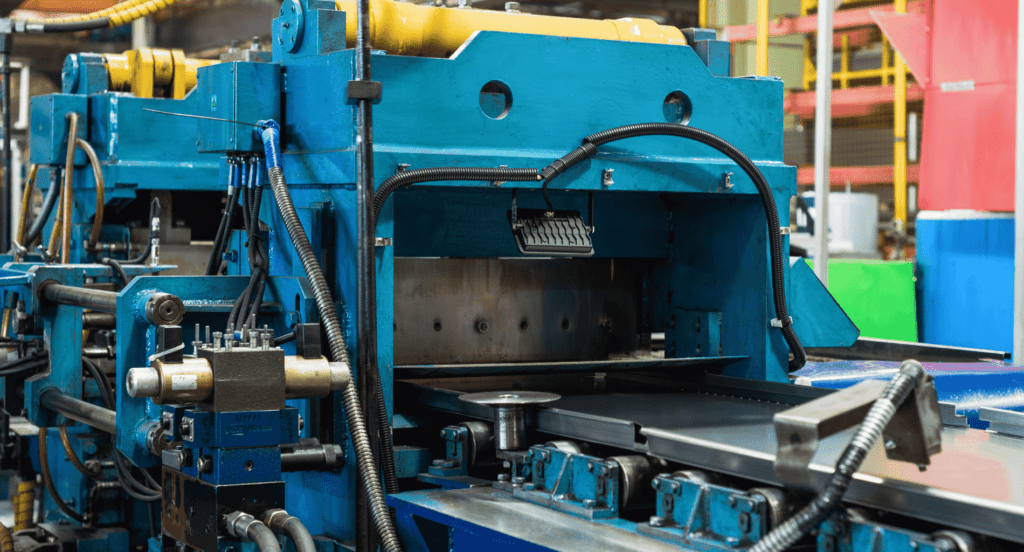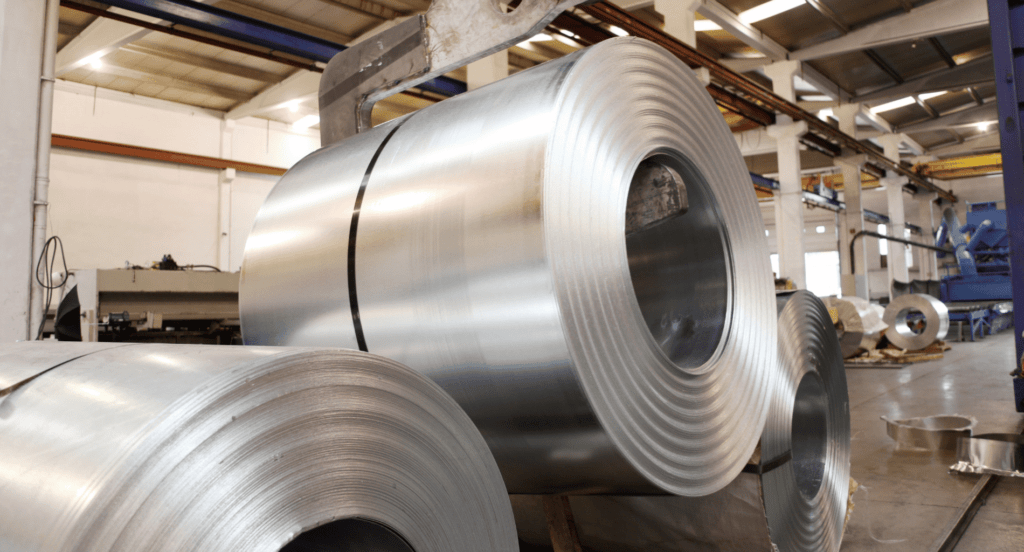Are you maximizing the efficiency and precision of your manufacturing process? Discover how sheet metal stamping can change your production line and yield extraordinary results with unmatched accuracy.
With years of hands-on experience in the metal fabrication industry, I’ve guided businesses toward innovative solutions and improved outcomes. My insights are rooted in a deep understanding of industry needs and a commitment to excellence.
The sheet metal stamping process is a strategic advantage that can set your business apart. Precision, efficiency, and innovation are at its core, driving the production of high-quality components.
In this guide, we will explore the 7 pivotal steps in sheet metal stamping. Each step is a piece of a larger puzzle that, when completed, represents the culmination of quality and efficiency in modern manufacturing.
Read on to unlock the secrets of sheet metal stamping.
1. Step#1 Design and Planning Stage
To begin the sheet metal stamping journey, a careful design and planning set the stage for success. Here are the crucial steps involved in this initial phase:
- Understanding Client Requirements: The process starts by thoroughly understanding the client’s needs. This includes the part’s function, desired material, and specific dimensions. A deep comprehension of these requirements ensures the final product meets or exceeds expectations.
- Material Selection: Choosing the right material is critical. Factors like strength, flexibility, and cost are considered to find the best fit for the project. This decision impacts the stamping process’s efficiency and the component’s final quality.
- Tooling Design: Next, engineers design the tools and dies necessary for stamping. This involves creating a 3D model of the dies that will shape and cut the metal. Precision in this step is vital to ensure accuracy and minimize waste during production.
- Feasibility Analysis: Before moving forward, a feasibility analysis is conducted. This involves assessing the proposed design and plan against practical constraints, such as budget and time. It’s a crucial step to ensure the project is viable and aligned with production capabilities.
This table outlines the key aspects of conducting a feasibility analysis, emphasizing the importance of assessing various factors such as design, budget, time, and production capabilities to ensure the viability and practicality of a project.
| Aspect | Description | Purpose |
| Assessing Proposed Design | Evaluate the design’s practicality and suitability. | Ensures the design is realistic and can be effectively implemented. |
| Evaluating Budget Constraints | Consider the financial resources available for the project. | Determines if the project is financially viable and stays within budget. |
| Timeframe Analysis | Analyze the proposed timeline for project completion. | Assesses if the project can be completed within the desired or necessary timeframe. |
| Production Capability Alignment | Review the alignment with available production capabilities. | Ensures the project can be executed with the current resources and infrastructure. |
| Overall Project Viability | Conclude on the overall feasibility of the project. | Crucial for deciding whether to move forward with the project, modify it, or abandon it. |
2. Step#2 Tooling and Equipment Setup
Transitioning from the design and planning stage, the tooling and equipment setup phase is where plans begin to materialize. Here are the steps involved in setting up for sheet metal stamping:
- Installation of Dies: The custom-designed dies created in the planning stage are installed into the stamping press. Careful alignment and securing are critical to ensure precision in the stamping process.
- Calibration of Equipment: Once the dies are in place, the stamping equipment is calibrated. This involves setting the correct pressure, speed, and other parameters to match the specific requirements of the job. Calibration ensures that each stamping cycle is consistent and accurate.
- Test Run: Before full-scale production begins, a test run is conducted. This involves stamping a few pieces and examining them for quality and accuracy. For example, if the project involves creating car door panels, a test panel will be stamped and checked for perfect fit and finish.
- Safety Checks: Safety is paramount in metal stamping. This step involves checking all safety guards, emergency stops, and other protective measures to ensure a safe working environment. This not only protects the operators but also helps in maintaining the integrity of the equipment and the product.

3. Step#3 Preparation of Metal Sheets
After setting up the tooling and equipment, the next critical phase is preparing the metal sheets for stamping. Proper preparation ensures a smooth and efficient stamping process. Here are the key steps involved:
- Cleaning and Degreasing: The metal sheets are thoroughly cleaned and degreased to remove any dirt, oil, or other contaminants. This ensures that the surface is pristine, which is crucial for achieving a high-quality finish and strong adherence to later coating processes.
- Cutting to Size: Based on the project specifications, the metal sheets are cut to the required size. Precision cutting is vital to ensure that each sheet fits perfectly within the stamping press and matches the dimensions of the dies.
- Surface Treatment: To enhance durability and performance, the metal sheets may undergo surface treatment. This could include processes like anodizing or passivation, which improve resistance to corrosion and wear. For instance, aluminum sheets might be anodized to increase their surface hardness and aesthetic appeal.
- Checking for Flaws: Before the sheets are fed into the stamping press, they are carefully inspected for any defects such as cracks, or irregularities. Identifying and addressing any issues at this stage prevents problems in the subsequent stamping process and ensures the final product meets quality standards.

4. Step#4 Creating the Die and Punch
With the metal sheets prepared, focus shifts to the heart of the stamping process; creating the die and punch. This is where the design is transformed into tangible tools that will shape the metal. Here are the critical steps in this process:
- Design Transfer: The detailed designs from the planning stage are transferred onto the die and punch materials. This ensures that the dimensions and specifications are precisely replicated in the tools that will shape the metal.
- Machining the Die and Punch: Using advanced machinery, the die and punch are carefully crafted. This involves cutting, drilling, and shaping the materials to match the exact contours and dimensions required for the stamping process.
- Heat Treatment: To enhance their durability and performance, the die and punch often undergo heat treatment. This process hardens the tools, making them resistant to wear and capable of withstanding the immense pressures of the stamping process. Zemetal employs this heat treatment technique to ensure the longevity and efficiency of their fabrication tools.
- Final Inspection and Assembly: Once the die and punch are crafted, they undergo a final inspection to ensure they meet all specifications. They are then assembled into the stamping press, ready to transform the prepared metal sheets into the desired components.

5. Step#5 The Stamping Operation
With the die and punch meticulously crafted and installed, the stage is set for the heart of the process; the stamping operation. Here’s how this critical phase unfolds:
- Feeding the Metal: The prepared metal sheets are fed into the stamping press. This is typically done automatically, with precision alignment to ensure that the metal is positioned correctly between the die and punch. Streamline your production with confidence, knowing every sheet is perfectly placed for optimal stamping results.
- Pressing: The press then comes down with controlled force, pressing the metal sheet between the die and punch. This action forms the metal into the desired shape, with the die acting as the mold and the punch forcing the metal into place.
- Monitoring for Quality: Throughout the stamping operation, quality control measures are in place. Technavio reported that the metal stamping market is poised to value $40.18 billion by 2028. This surges hiighlights the need of sensors and inspections to ensure that each sheet piece is stamped correctly, aiming to standout in the agrressive indusrty growth of metal stamping.
- Ejection and Collection: After the metal is stamped, it’s ejected from the press and collected. This may be done manually or through an automated system, depending on the complexity and scale of the operation. Optimize your workflow with an efficient ejection and collection system, ensuring every piece reflects the high-quality craftsmanship your clients expect.
6. Step#6 Quality Control and Inspection
Following the stamping operation, the next phase that ensures the integrity and precision of each component is the quality control and inspection. This systematic process is vital for maintaining high standards. Here’s how it’s typically conducted:
- Visual Inspection: The first step is a thorough visual inspection of each stamped piece. Trained personnel look for any visible defects, such as misalignments, burrs, or inconsistencies in shape. This is a critical first filter to catch any obvious issues.
- Dimensional Verification: Using tools like calipers, micrometers, and coordinate measuring machines, the dimensions of the stamped parts are meticulously checked against the specifications. This ensures that each piece meets the precise measurements required for its intended use.
- Material Testing: In some cases, especially for parts that will be subjected to high stress or extreme conditions, material testing is conducted. This can include hardness tests, tensile tests, and other methods to ensure the material’s properties align with what’s needed for its application.
- Documentation and Record Keeping: Throughout the quality control process, detailed records are kept. This not only ensures that each batch can be traced and verified, but also helps in identifying and rectifying any recurring issues.
7. Step#7 Post-Stamping Operations
Once the pieces have passed the rigorous quality control and inspection phase, they move into the final phase of the process which is the post-stamping operations. Here are the key steps involved:
- Trimming and Deburring: After stamping, the pieces often have excess material or sharp edges that need to be removed. Trimming cuts away any unnecessary parts, and deburring smooths out the edges, ensuring the component is safe to handle and fits perfectly in its final assembly.
- Surface Finishing: Depending on the requirements, various surface finishing techniques can be applied. This might include plating, or coating to improve resistance to corrosion, or provide other desired properties. Choose the right finish to elevate your product’s appearance, making it a testament to your business’s commitment to quality.
- Assembly and Welding: Some components require assembly with other parts or welding to create the final product.Zemetal done this step with precision techniques to ensure strong, accurate joins that uphold the integrity of the overall piece.
- Final Inspection and Packaging: The completed items undergo one last inspection to ensure they meet all the specifications and quality standards. They are then carefully packaged for shipping, with protection against damage, so they arrive at their destination in perfect condition.

Conclusion
Understanding the steps in the sheet metal stamping process demonstrates how high-quality components are produced, guiding businesses toward informed decisions and efficient operations. This comprehensive guide serves as your roadmap to navigating and leveraging this complex process effectively.
For specialized assistance and to delve deeper into how the sheet metal stamping process can benefit your business, Zemetal is here to guide you. Discover tailored solutions that fit your needs contact us today.
Dive Deeper Into Our Resources
For some insightful reads, we’ve curated a list of recommended articles just for you:
Still haven’t found what you’re looking for? Don’t hesitate to contact us. We’re available around the clock to assist you.








